Glass ceramics play an indispensable role in human body aesthetics restoration materials, There are two kinds lithium disilicate are available: Press and CAD.
Glass ceramics play an indispensable role in human body aesthetics restoration materials, There are two kinds lithium disilicate are available: Press and CAD.
① Ingots press. It needs to be die-casted in a porcelain-casting furnace in a high-temperature environment, and the resulting veneer has a good effect.
It can be divided into two types according to the permeability of the porcelain block:
HT(highly transparent, A1, A2, A3, A3.5, B1, B2, C1, BL1, BL2, BL3, BL4, 11 colors in total)
LT (low degree of transparency, A1, A2, A3, B1, B2, C1, C2, BL1, BL2, BL3, BL4 11 colors in total)
MO: M01, M02
② CAD blocks is in the partial crystallization stage (light purple) during the crafting process, which is easy for the equipment to grind.
According to the length, it is divided into C14 and B40.
It can be divided into two types according to the permeability of the porcelain block:
HT (highly transparent, VA-VD 16 colors, BL1, BL2, BL3, BL4, 20 colors in total)
LT (low degree of transparency, VA-VD 16 colors, BL1, BL2, BL3, BL4, 20 colors in total)
Note: There are two sizes of each transparent porcelain block: 18-15-13; 40-15-15
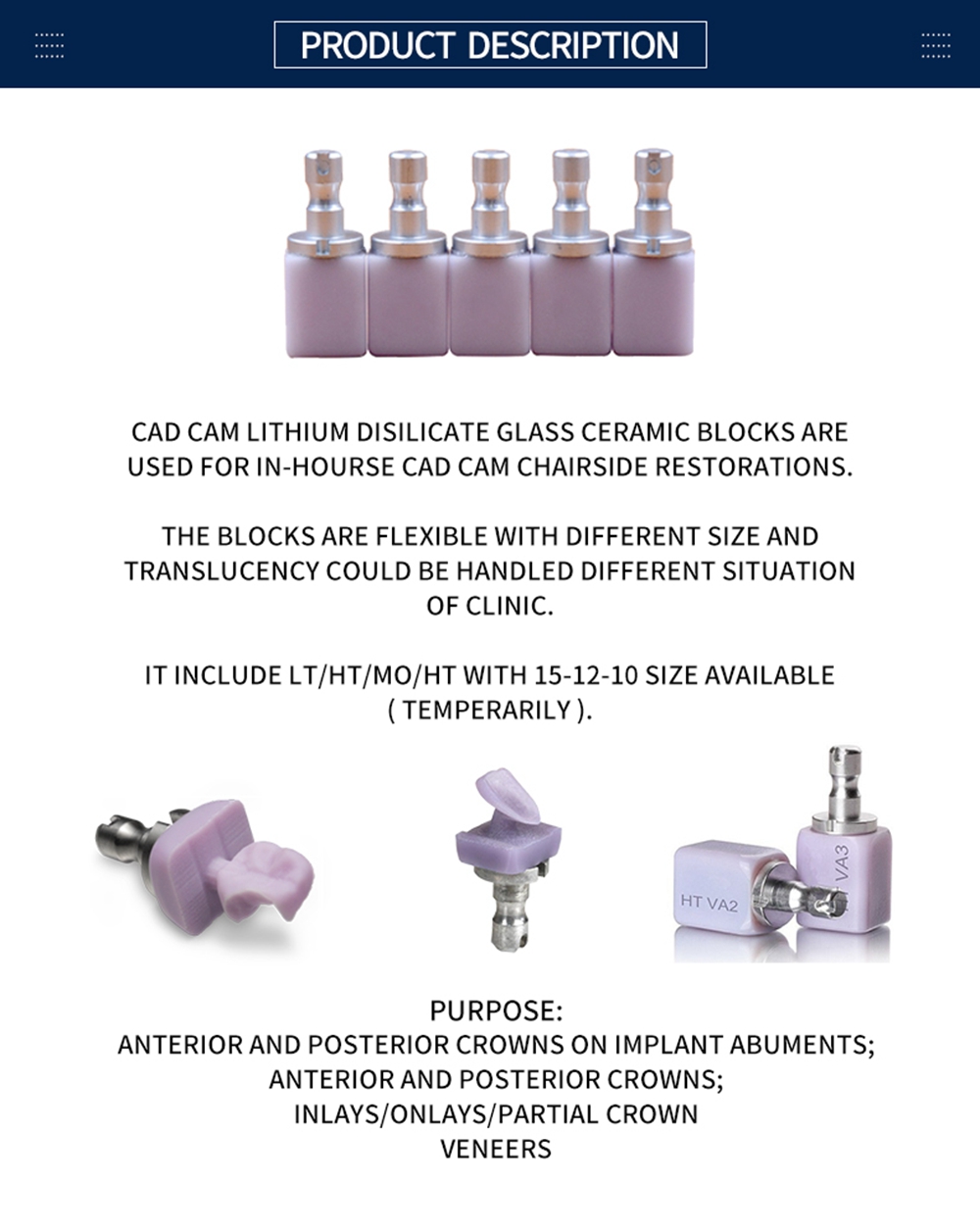
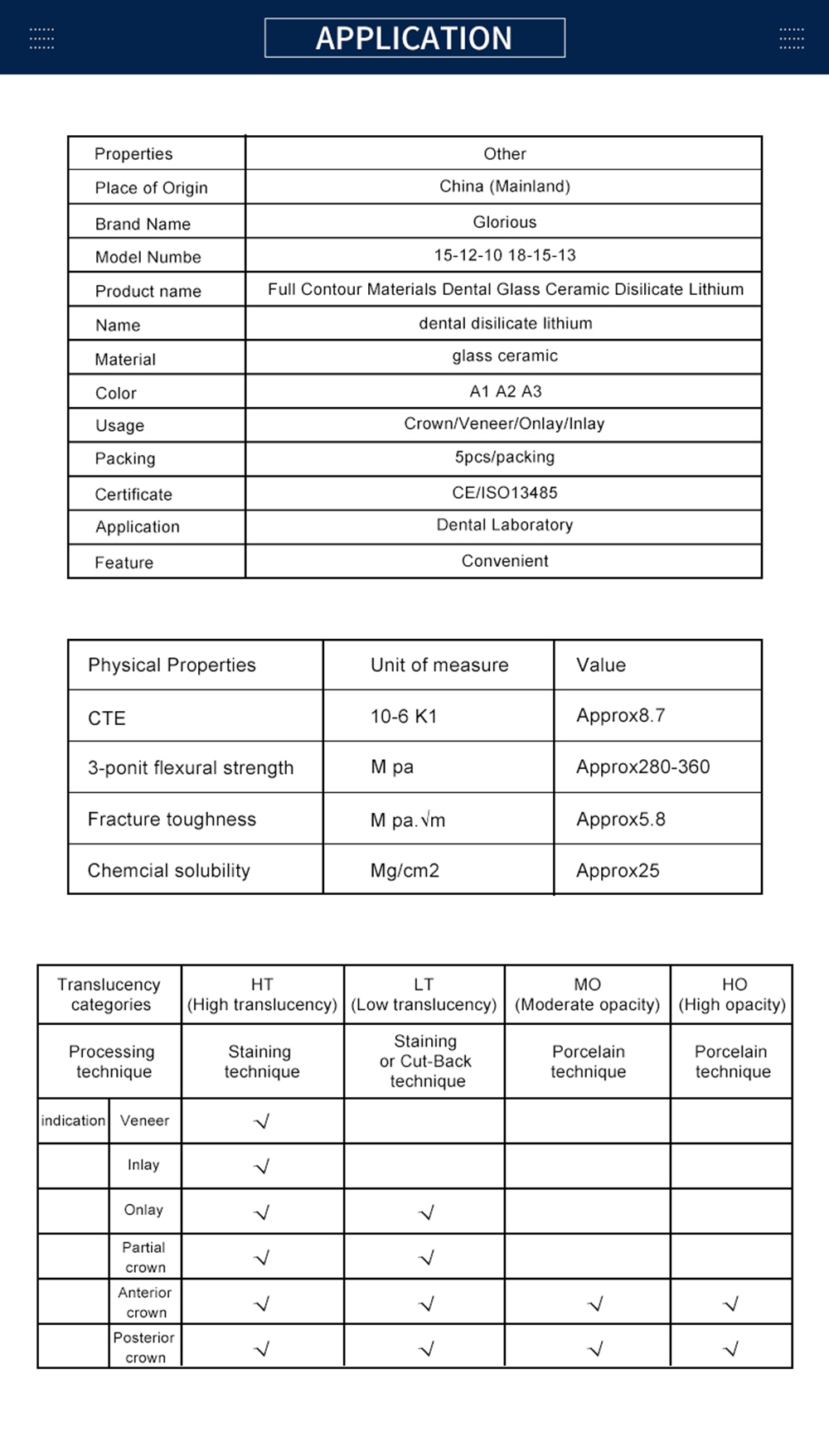
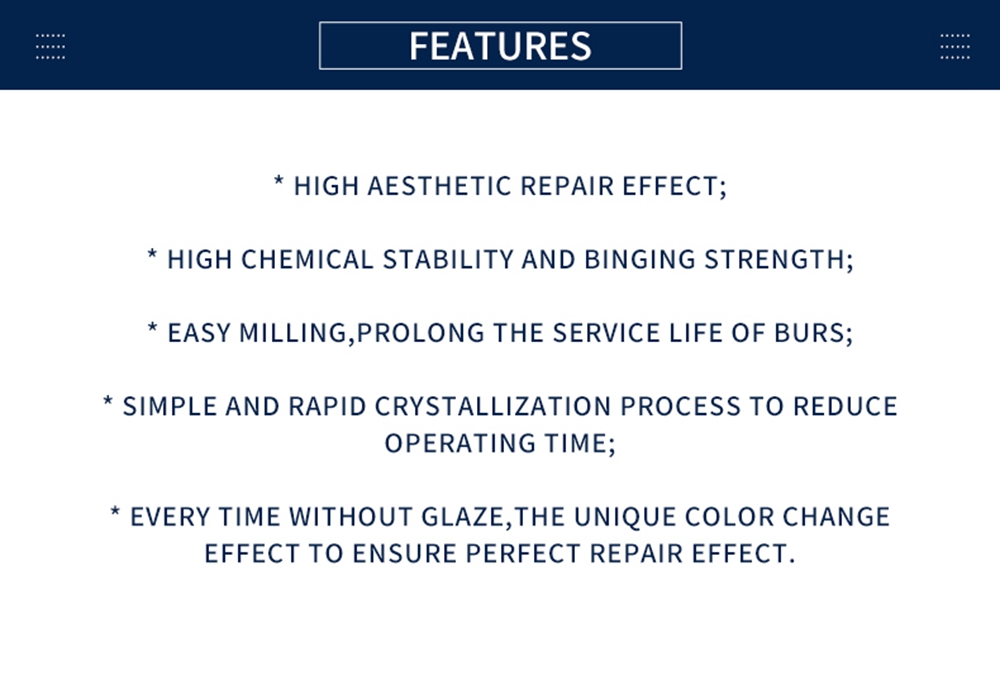
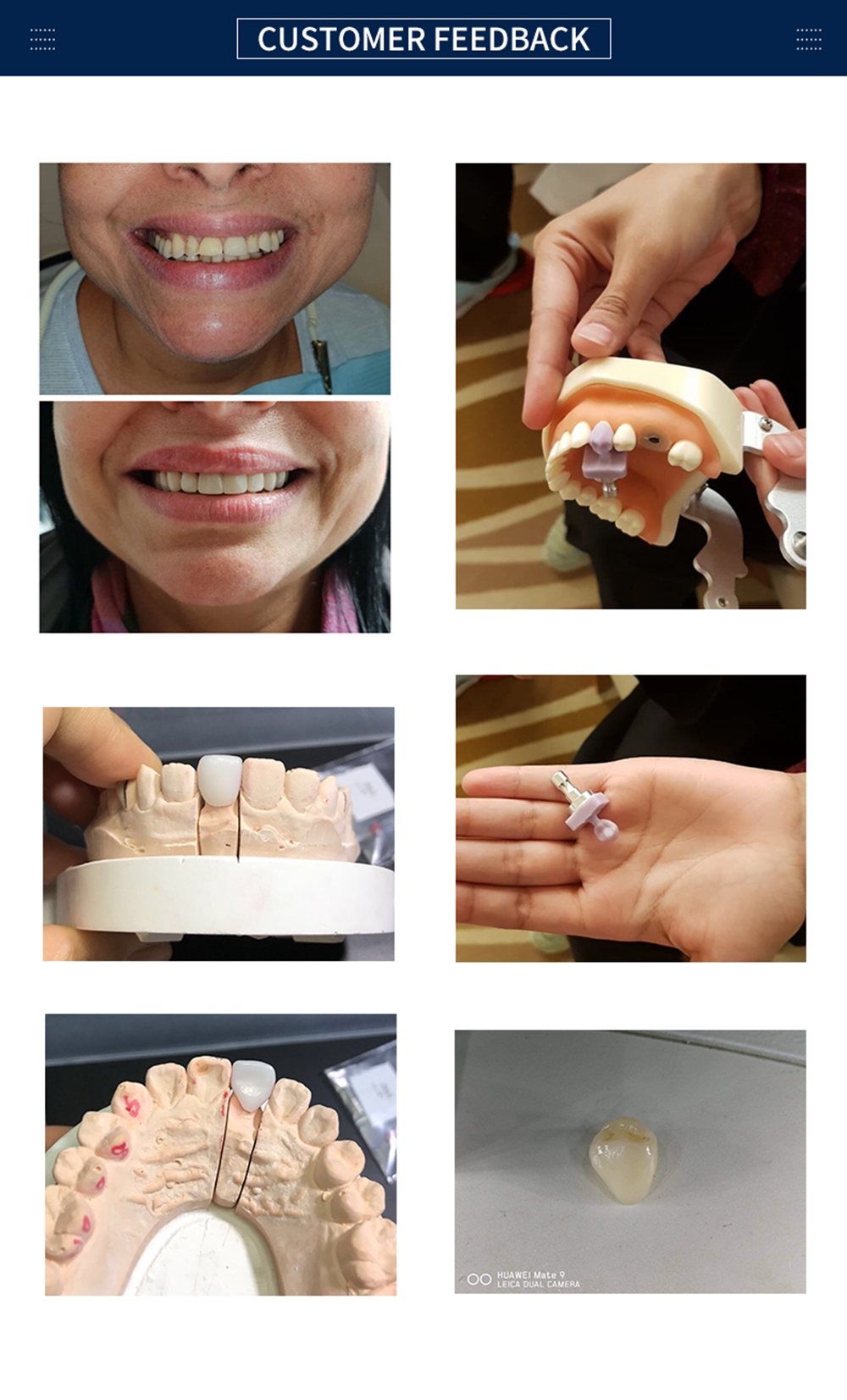

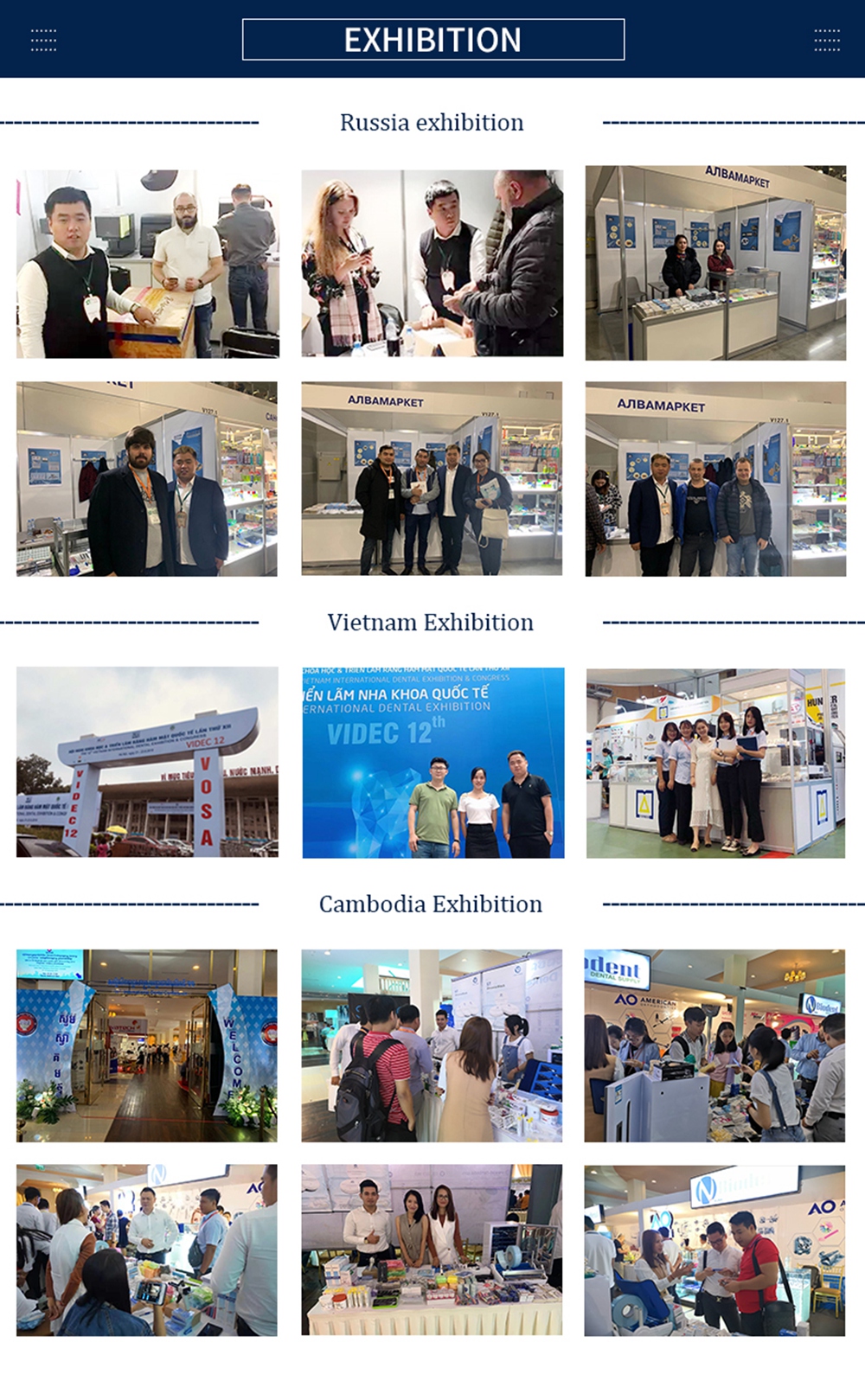
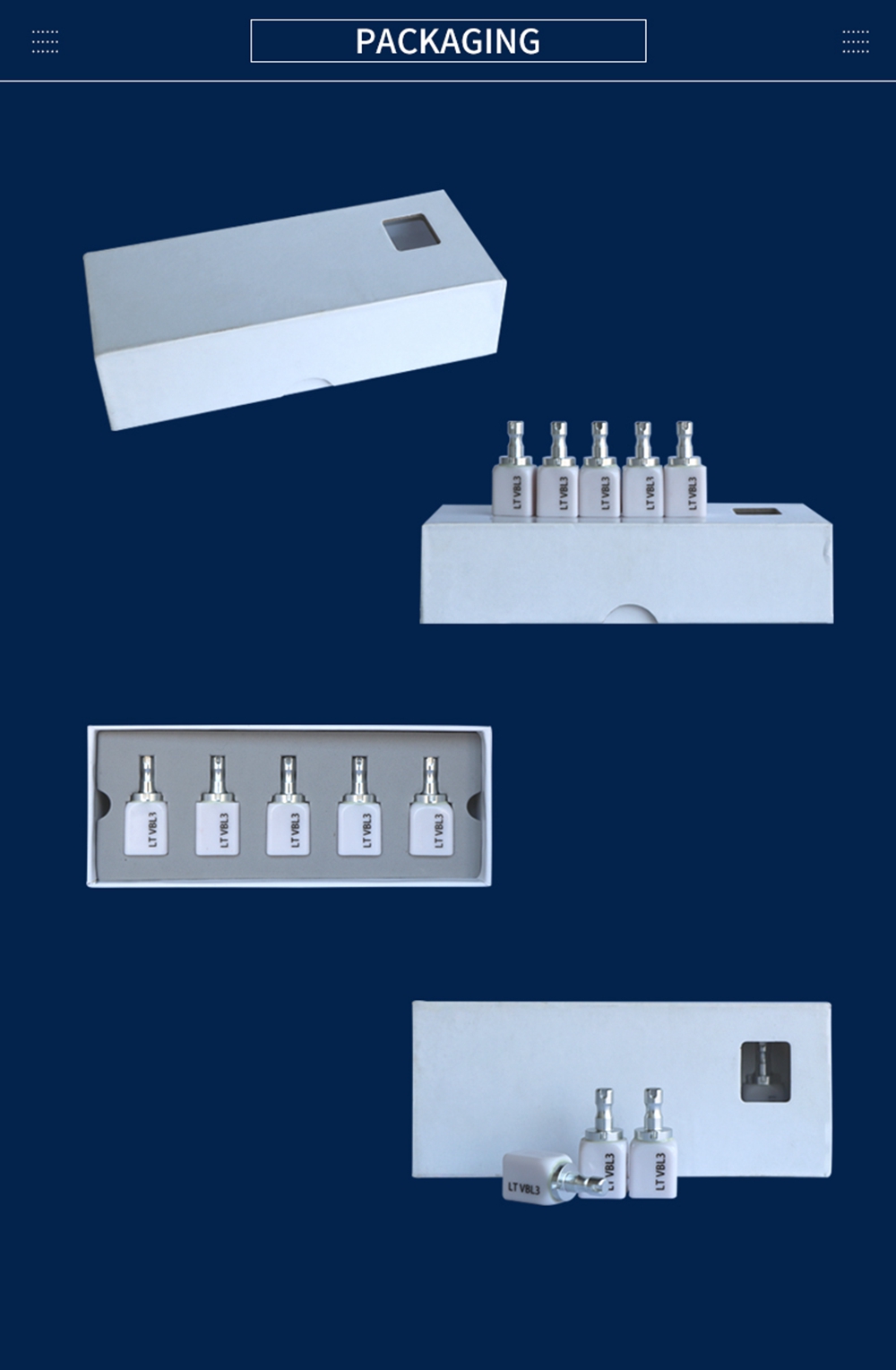
Advantages:
1. High aesthetic repair effect
2. High chemical stability and binging strength
3. Easy milling, prolong the service life of burs
4. Simple and rapid crystallization process to reduce operating time
5. Every time without glaze, the unique color change effect to ensure perfect repair effect
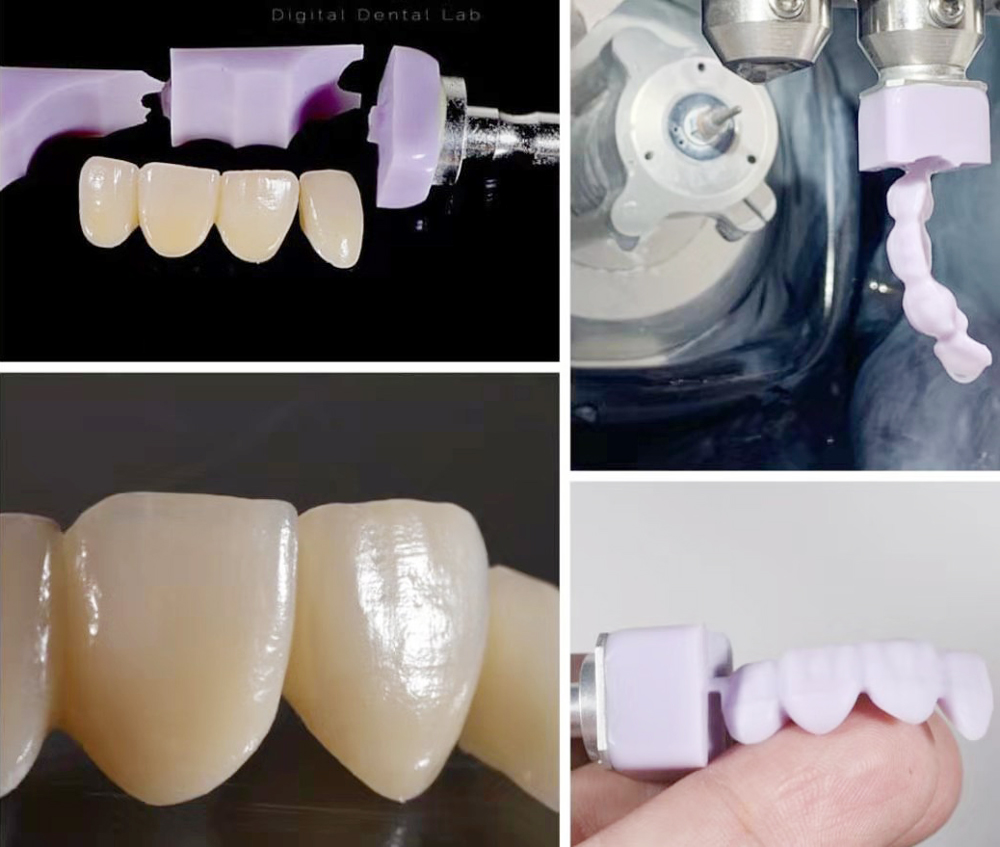
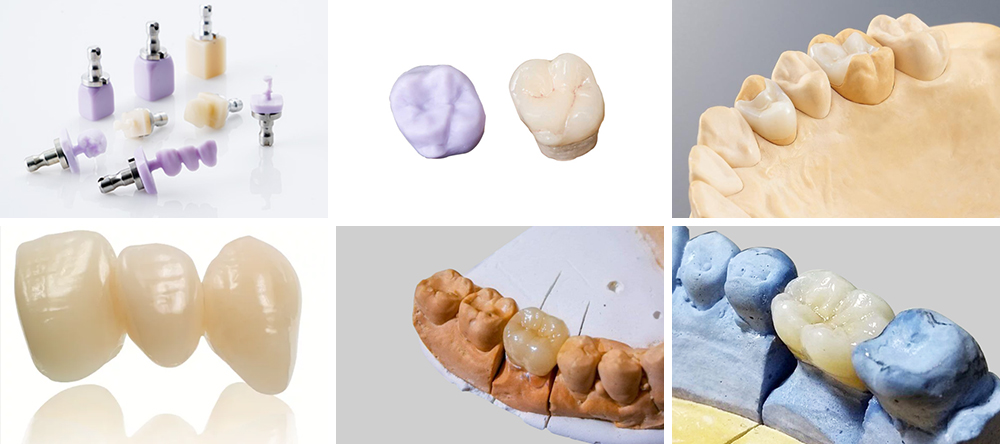
| Place of Origin | China (Mainland) |
| Properties | Crowns/Inlay/Onlay |
| Mainland | Shandong, China |
| Model number | D13-10 |
| Product name | Lithium disilicate blocks |
| Material | Glass ceramic |
| Color | Requests |
| Application | Dental laboratory |
| Feature | Wear resistance |
| Certificate | ISO13485 |
| Usage | Dentures |
| Size | 13mm*10mm |
| Instrument classification | Class I, Class II |
| Place of Origin | China (Mainland) |
| Brand Name | Glorious |
| Model Numbe | 15-12-10 18-15-13 |
| Name | dental disilicate lithium |
| Material | glass ceramic |
| Usage | Dentures |
| Packing | 5pcs/packing |
| Certificate | CE/ISO13485 |
| Application | Dental Laboratory |
| Feature | Convenient |
| Type | HT/LT |
| Properties | Veneer/Inlay/Onlay |
| Packing | 5pcs/packing |
| Certificate | CE/ISO13485 |
| Application | Dental Laboratory |
| Feature | Convenient |
Compared
| Translucency categories | HT(High translucency) | LT(Low translucency) | MO(Moderate opacity) | HO(High opacity) | |
| Processing technique | Staining technique | Staining or Cut-Back technique | Porcelain technique | Porcelain technique | |
| indication | Veneer | √ | |||
| Inlay | √ | ||||
| Onlay | √ | √ | |||
| Partial crown | √ | √ | |||
| Anterior crown | √ | √ | √ | √ | |
| Posterior crown | √ | √ | √ | √ | |
FAQ:
1.How to choose a suitable color and translucency?
Answer: Consider the following 5 respects when the clinics and technicians use the Lithium disilicate:
①The color of the final restoration
②The color of the prepared abutment
③The shape, size and thickness of the restoration
④The processing technique for the restoration
⑤The bonding material used and its color
2.What are the operating procedures for casting porcelain?
Model Preparation -Wax-up fabrication- Sprueing- Embedding- Preheating-Die Casting-Remove the embedding-cutting the sprue, try on and repair the model-finish the porcelain or glaze
3.What are the operating steps of CAD glass ceramics?
Scanning-Design-Typesetting-Processing-Separation of Restoration-Try-on and Trimming-Toning and Glazing-Finish
Precautions:
1. Don't get too close when cutting.For restoration, it is recommended to cut approximately 0.3mm along the supporting surface to avoid crown cracks caused by cutting
2. Use a special glass ceramic grinding tool to ensure that the restoration has a reasonable density through grinding. Closeness, bite, and adjacent surface contact.
3. During secondary crystallization, the restoration should be placed on high temperature cotton or a special sintered material should be used as support
4. Only low-temperature glazing materials can be used when glazing, and the recommended sintering temperature is less than 840℃
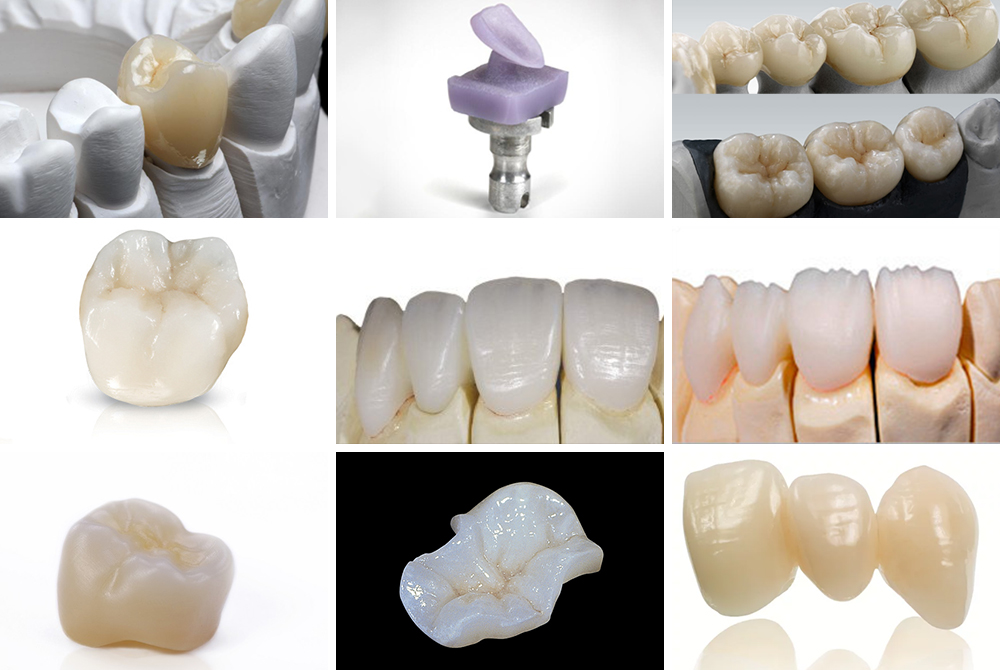
Enviar un mensaje